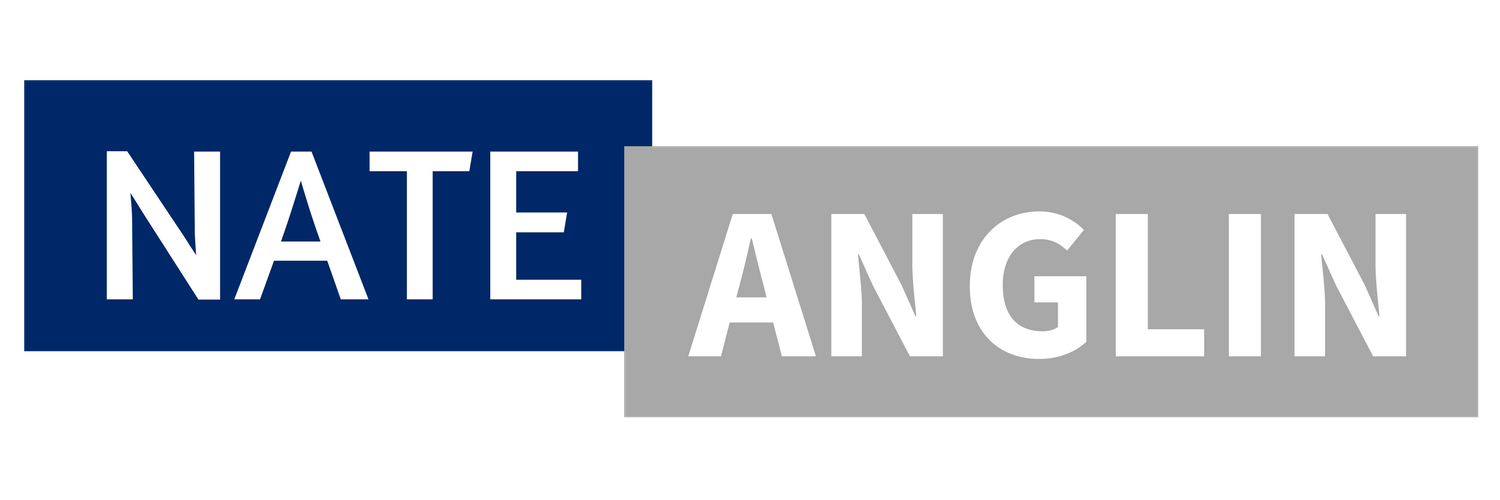The Only Goal Setting Guide You'll Ever Need To Transform Your Future Self
Setting crappy goals isn’t your fault; nobody teaches you how to properly plan for the things that matter the most to you.
People clamor that “you must have goals” but fail to teach you how to choose the right goals.
When I started taking over my family business, everything was a guess in the early days. Most of my goals were financial, “surpass X in annual revenue.” I failed, flopped, and banged my head on the wall thousands of times, trying to hit this type of lazy goal.
I thought, because others say revenue is important, a standard business metric, it must be essential for me too.
But, slowly, I started to understand that magic happens if I set unique goals and broke them down into smaller chunks.
That’s the basis of an Optimized Goal, start huge, and break it down:
Before you decide what goals you think you want to pursue, you must learn to choose goals, not just set them.
Goals help you focus your finite attention on something important and meaningful.
Yet, we often make the mistake of setting goals, “like becoming a millionaire” or “having abs” as a target of desire.
Goals become the product of “self-flagellation” rather than producing an impactful result for your unique life. That’s why you must become self-aware before trying to map your journey. The goals you set are often mimetic based on the desires of other people in your life, people that Luke Burgis calls models.
The best way to choose goals is through various filters and desire checks.
Map out your systems of desire.
“Every industry, every school, every family has a particular system of desire that makes certain things more or less desirable,” writes Luke.
It’s essential you “know which systems of desire you’re living in,” and more than likely, it’s more than one.
On a piece of paper, draw a large circle. The circle represents a system of desire you’re currently in, like your family, a company, or a friend group.
Inside the circle, write down all the things (people, institutions, etc.) that are responsible for controlling the goals and desires you seek. Self-awareness is crucial here. “Be honest with yourself about how attached you are to the goals and people that you list.”
Then, ask yourself, “What are some things that I might want to pursue that lie completely outside the boundaries, for which there is no support or understanding?”
Write these outside of your circle.
Have a firm understanding of your vision, mission, and values.
To create impactful goals that aren’t you trying to follow the next mimetic desire of the world you live in, you must have a North Star to filter all your decisions through.
Your values:
Everything starts with your values. So, for example, if you set a goal to become a billionaire, which would consume every waking hour of your life, but your family is the most important thing to you, you have a goal versus value conflict.
Your values always win.
But not all values are created equal. When they are, “then the one that wins out — especially at a time of crisis — is the one that is most mimetic.”
You must develop a hierarchy of values.
Your mission:
Your mission, in business or life, is how you direct all your attention.
It’s your single big objective that rarely, if ever, changes. When you have a clear mission, setting the right goals to help fulfill that mission becomes more manageable.
You’re not chasing one shiny object from the next.
An example, in one of my companies, our mission is “We believe in making it ridiculously easy to do business with us delivering nose-to-tail aircraft maintenance material to dedicated client accounts, anywhere in the world.”
Our goals as a company must help push this objective forward.
If you’re setting goals personally or professionally, you must have a mission.
Your vision:
Michale Hyatt believes “a vision should be something that personally interests and motivates you.”
It’s typically the vision you have three years from now.
A company vision articulates your team, products, sales, and impact.
A personal vision articulates what matters the most to you personally and how you’ll get to where you want to be eventually.
Having a near-term vision helps you focus on what’s most important.
Step 1: Establish 3 life domains to focus on.
In the first step of choosing the right goals, you need to decide what life domains deserve your attention.
Michael Hyatt lists ten in his book, Your Best Year Ever. They are:
Spiritual: Your connection with your spiritual self.
Intellectual: Your engagement with significant ideas and learning.
Emotional: Your psychological health.
Physical: Your bodily health.
Marital: Your spouse or significant other.
Parental: Your children if you have any.
Social: Your friends and associates.
Vocational: Your profession.
Avocational: Your hobbies and pastime.
Financial: Your personal or family finances.
All these are important to living a great life, and when one is out of balance, everything else suffers.
But you can’t work on them all simultaneously, or your goals will compete for your time and attention, only getting a little piece of you at any given moment.
That’s why you must focus your attention on only THREE life domains at any time.
Step 2: Choose one-year goals for each life domain.
Your Big Hairy Audacious Yearly Goal is big and ambitious but just short of ridiculous.
Your BHAG stretches you and maybe even pushes you into uncomfortable territories. It’s a good goal when you feel a little nervous or slightly tense. There’s no growth in the comfort zone.
Only choose three BHAGs in a given year and only one BHAG per domain.
For example:
1 vocational BHAG
1 financial BHAG
1 health BHAG
And remember, the priority isn’t just to set goals; you have to learn to choose goals that matter to you and only you.
When creating your yearly BHAG goals, ask yourself these questions:
Why is this goal so important? How does it help me achieve my vision/mission/values or long-term goals?
What’s the truth about my current situation, and how does it relate to this goal?
What are the available resources and people to support me with this goal?
Then, once you have a clear yearly focus, you start to break those goals down into smaller chunks.
Step 3: Set quarterly sprint goals.
Action is where all goals are achieved.
To succeed with your yearly goals, you have to condense your goals into smaller chunks. Your BHAGs are a great short-term vision, but they’re terrible at guiding your daily actions.
It all starts with a CORE QUARTERLY OBJECTIVE that attaches itself to one of your yearly BHAGs.
It may not attain your yearly goal by itself, but it’ll be integral to helping you achieve your annual goal within a quarter. Of course, some BHAGs may take multiple quarters to complete — that’s okay.
So ask yourself:
Why is this quarterly objective important? How does it help me achieve my yearly goal of X?
Who can help me accomplish this objective?
Then, break each quarterly objective down into these parts:
For example, let’s say my yearly BHAG is a vocational goal to exceed $20,000,000 in annual revenue (yes, a lazy financial goal).
Objective:
This is where you label what you want to achieve this quarter.
“Increase sales volume by the end of Q1.”
Obstacles:
List out the potential obstacles standing in your way of achieving the objective.
Strategies:
Ask yourself, what strategies can I implement to help achieve this objective?
An example:
“Update outbound cold calling sales strategy.”
Who’s My Who:
What specific people do you need help from or find to help you achieve this objective?
“Sales Manager.”
Key Results:
Finally, you’ll list the key results to know how you’re progressing on the quarterly objective.
Ask yourself, what are the three to five key results that will help me know that I’ve successfully achieved my objective?
Focus on leading indicators over lagging indicators.
“Key Result: 20 Solution Design Meetings With New Opportunities.”
“Key Result: 100 Daily Cold Calls/Emails”
“Key Result: $15,000,000 In New Pipeline Opportunities Beyond The First Stage.”
“Key Result: $4,000,000 In Q1 Revenue.”
These are just examples, but breaking down your objective into measurable results is the key.
Step 4: Execute daily habit goals.
Daily actions are the simplest way to make massive progress on your goals.
You can’t achieve sales numbers by simply dreaming up a big sales target. Instead, successfully achieving your goals is often about daily consistency and trusting the process over a period of time.
Ask yourself:
What are the two daily actions I would need to create tangible, compounding progress?
Some examples are:
Writing: 30-minutes of writing before 9 am.
Sales: 10 prospecting calls by 9:30 am.
Fitness: 30-minutes of walking per day.
Reminder: Don’t make more than two daily habit goals for every goal within a particular life domain; otherwise, you’ll burn out and get goal fatigue.
If you focus on everything, you focus on nothing.
Step 5: Create anti-goals.
Anti-goals are things you don’t want to happen as the ultimate outcome or the hurdles you may encounter along the way.
They’re your braking mechanism to spot issues and course correct.
Anti-goals come from inversion, a mental model that says complex problems are often easier solved backward vs. forwards.
So when creating goals, start by inverting the problem:
What will keep me from achieving my goals?
What does the worst possible outcome look like?
What inefficient systems/habits would lead to that?
What daily actions would I regret?
Now, by working backward, you’ll create anti-goals which are the outcomes you don’t want.
So, for example, let’s continue down the path of our BHAG of $20,000,000.
The anti-goals could be:
The sales team pursues anybody with a pulse. Before making any calls, they need to do minimal viable research and ensure the company is a good target.
Spending too much time on operational and administrative activities. We get the order, and it’s up to the operations team to get it delivered.
Making excuses to make calls. Every morning there must be a cold calling sprint to “swallow the frog.”
Step 6: Track and adjust regularly.
What gets tracked get’s done.
Your yearly, quarterly, and daily habits should be tracked and monitored routinely. You should quickly know where progress is being made and which areas need adjustments, so they don’t get too far off track.
A simple way to do this is to set a day on your calendar every week to review and update your goals.
A Goal Setting Example:
Life Domain: Vocational
BHAG: $20,000,000 In Yearly Revenue
Quarterly Objectives: $4,000,000 by Q1 with rolling quarters of $9,000,000 by Q2, $14,000,000 by Q3, and $20,000,000 by the end of Q4.
Daily Habits: 45 min of prospecting each AM. 15 min of role-playing after lunch.
Anti-goals: pursue only ideal targets. Don’t get weighed down in administrative activities. Focus on daily activity, not quarterly sales numbers.
TL;DR
Learn to choose goals.
Establish 3 life domains to focus on.
Choose a one-year goal for each life domain.
Establish quarterly objectives for each yearly goal.
Develop daily habits.
Create anti-goals.
Track and adjust your goals.








